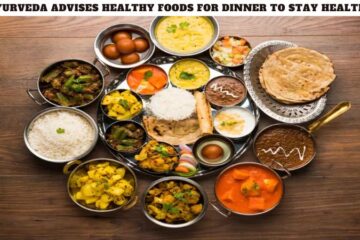
Plastic water bottles have become a staple in our daily lives. They are convenient, lightweight, and easily accessible. However, reusing plastic water bottles poses serious health and environmental risks that many people overlook. While it may seem like an eco-friendly and cost-effective solution, it can actually expose us to harmful chemicals, bacteria, and microplastics.
In this article, we explore the dangers of reusing plastic water bottles, the types of plastic to avoid, and safer alternatives to consider.
1. The Hidden Dangers of Reusing Plastic Water Bottles
1.1 Bacterial Growth and Contamination
Every time you drink from a plastic water bottle, bacteria from your mouth and hands can transfer onto the bottle’s surface. When bottles are reused without proper cleaning, these bacteria multiply, leading to potential infections and illnesses.
- Studies have shown that unwashed reused plastic bottles can contain higher bacteria levels than toilet seats.
- Cracks and scratches in the plastic create a breeding ground for harmful bacteria like E. coli and Salmonella.
- High temperatures, such as leaving the bottle in a car, can further accelerate bacterial growth.
1.2 Release of Harmful Chemicals
Most plastic bottles are made from polyethylene terephthalate (PET or PETE), which is designed for single use only. When reused, the plastic starts breaking down, releasing harmful chemicals into the water.
- Bisphenol A (BPA) and Phthalates are common toxic compounds found in plastic bottles. They can leach into the water, leading to hormonal imbalances, reproductive issues, and increased cancer risk.
- When exposed to heat or direct sunlight, plastic bottles release antimony, a toxic substance linked to lung and heart diseases.
2. The Different Types of Plastic and Their Safety Levels
Not all plastics are the same. Some are more dangerous than others, and it’s crucial to know which ones to avoid.
2.1 Understanding Plastic Codes
Plastic bottles have a resin identification code, usually printed on the bottom, indicating the type of plastic used.
| Plastic Code | Type | Safety Level | Common Uses |
|---|---|---|---|
| 1 (PETE) | Polyethylene Terephthalate | Unsafe for reuse | Water, soda bottles |
| 2 (HDPE) | High-Density Polyethylene | Relatively safer | Milk jugs, shampoo bottles |
| 3 (PVC) | Polyvinyl Chloride | Dangerous | Food wrap, pipes |
| 4 (LDPE) | Low-Density Polyethylene | Safer | Grocery bags, squeezable bottles |
| 5 (PP) | Polypropylene | Safe | Yogurt containers, medicine bottles |
| 6 (PS) | Polystyrene | Unsafe | Foam cups, takeout containers |
| 7 (Other) | Mixed plastics, BPA-containing | Very dangerous | Baby bottles, large water containers |
2.2 The Worst Offenders: Plastics to Avoid
- PET (1): Designed for single-use only, prone to bacteria and chemical leaching.
- PVC (3) & PS (6): Contain toxic substances like dioxins and styrene, which are linked to cancer and neurological disorders.
- Plastic #7: Often contains BPA, an endocrine disruptor affecting hormonal balance.
3. Environmental Impact of Reusing Plastic Bottles
3.1 Contribution to Plastic Pollution
Even when reused multiple times, plastic bottles eventually end up in landfills or oceans, contributing to the global plastic pollution crisis.
- Over 1 million plastic bottles are purchased every minute worldwide.
- Less than 10% of plastic bottles are properly recycled.
- Microplastics from degraded bottles contaminate drinking water, soil, and marine life.
3.2 Health Risks from Microplastics
When plastic bottles degrade, they release microplastics, which find their way into the food chain. Humans consume up to 5 grams of microplastics weekly, leading to potential gut inflammation, organ damage, and long-term health risks.
4. Safe and Sustainable Alternatives to Plastic Water Bottles
4.1 Stainless Steel Bottles
- Durable, reusable, and free from harmful chemicals.
- Keeps water cooler for longer periods.
- 100% recyclable and eco-friendly.
4.2 Glass Bottles
- Non-toxic and does not leach chemicals.
- Easy to clean and maintains water purity.
- Heavier than plastic but safe and sustainable.
4.3 BPA-Free Reusable Plastic Bottles
- Made from safe plastic materials like Tritan.
- Lightweight and shatterproof.
- A better option than PET bottles but should still be replaced regularly.
4.4 Filtered Tap Water
- Investing in a water filter reduces plastic waste.
- Cheaper and more sustainable than buying bottled water.
- Eliminates concerns of chemical leaching from plastic.
5. How to Properly Maintain a Reusable Water Bottle
If switching to a reusable bottle, proper maintenance is essential to prevent bacterial buildup.
5.1 Cleaning Tips
- Wash daily with warm, soapy water.
- Use a bottle brush to clean hard-to-reach areas.
- Sanitize weekly with vinegar or baking soda.
- Avoid dishwashers for plastic bottles, as heat can degrade them.
5.2 When to Replace Your Bottle
- If the bottle develops cracks or scratches.
- When it starts smelling bad, despite cleaning.
- If it changes color or texture, indicating degradation.
6. Final Thoughts: Make the Switch Today
Reusing plastic water bottles may seem like an economical and environmentally friendly choice, but it carries significant health risks. From bacterial contamination to toxic chemical exposure, the dangers outweigh the convenience. Additionally, the impact on plastic pollution is devastating.
By switching to safer alternatives like stainless steel, glass, or BPA-free reusable bottles, we can protect our health and the environment. Make an informed choice today and ditch single-use plastic bottles for good.


